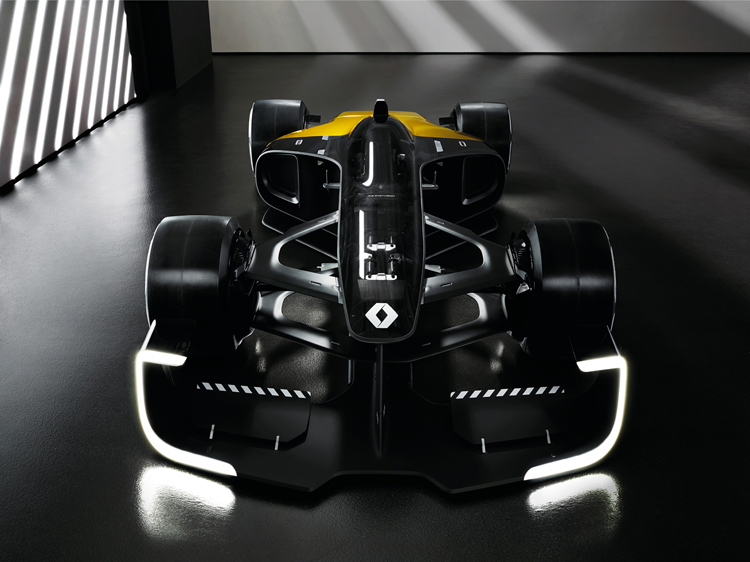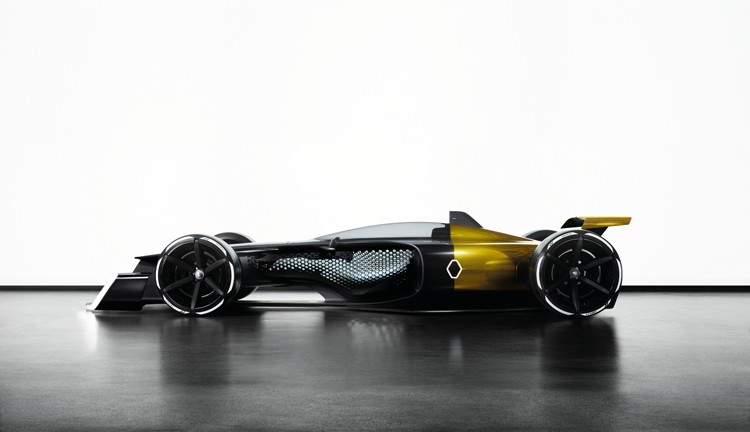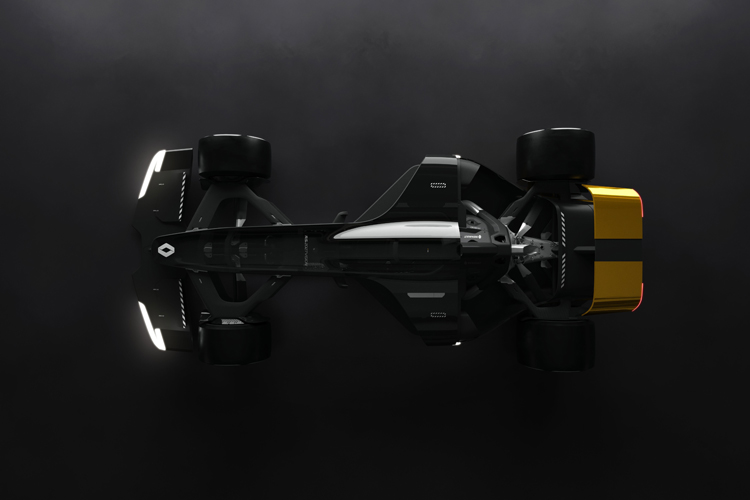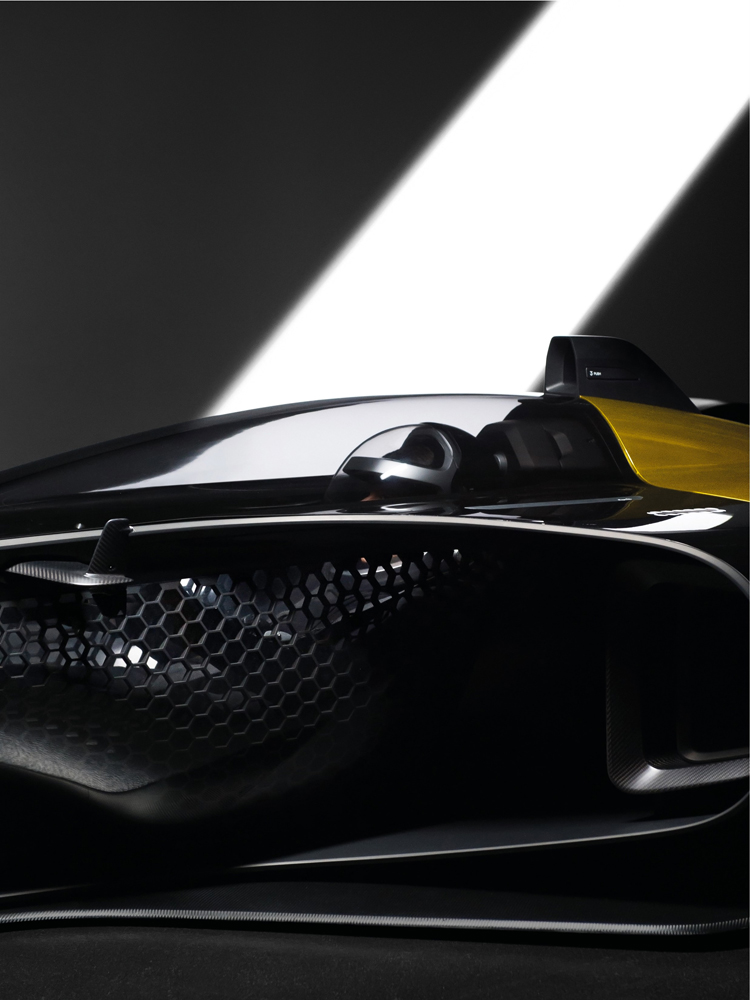Aided by 40 years of experience in Formula 1, Renault has outlined a vision of what racing’s premier series might look like in 2027. Renault’s vision of Formula 1, ten years from now, places people at the centre –one of Renault’s core values– as a vital cornerstone of F1 experience. Propelled by a high-powered engine, the driver can showcase qualities as a top athlete for the pleasure of fans. More attractive, Formula 1 also becomes safer, to better protect participants, and takes more active responsibility towards the environment.

With a weight / power ratio never before reached in the history of Formula 1 (1 megawatt on the whole for a weight limited to 600 kilos), human performance is at the heart of the sport. To make Formula 1 more captivating, fans benefit from a closer connection to the driver, whether they are watching trackside or on television.
Thanks to its transparent cockpit, the R.S. 2027 Vision concept provides the best-ever view of the driver at work. This resistant, lightweight shell is 3D-printed, with forms tailored to the driver’s body, mirroring how the design of Renault’s road-going models is directly inspired by the human body. The helmet is also transparent, enabling fans to see the driver’s face and expressions.

Active LED lighting incorporated into the wheels displays a range of information, including the driver’s position and the car’s remaining energy reserves, making it easier for spectators and television viewers alike to understand how the race unfolds.
The digital display in the centre of the steering wheel informs the driver of his ‘fan ranking’ position, which is determined by spectators’ interaction on social media, rewarding the most deserving driver on the track with an additional boost of power in the last laps. Some of the driver’s telemetry data is accessible to fans via the Internet, enhancing their overall understanding of the race and the strategy. This data also allows connected players to participate real-time in the race and compete against their heroes.

In terms of design, Formula 1 evolves to become equally appealing to racing enthusiasts while it attracts new fans. The cars are instantly recognisable as F1 single-seaters, with their long, slender nose, side pods and four open wheels. Their design is both finely-honed and more aggressive.
In addition to the roles they play in optimising performance and energy efficiency, the combination of mobile aerodynamic features and active lighting systems make the cars more ‘communicative’ for spectators and television viewers.

In the case of the R.S. 2027 Vision, bold features like the C-shaped LED front lights and the illuminated Renault diamond on the engine cover provide a visual tie between the racing car and Renault’s road-going models. To make the show even more captivating for spectators, the colour emitted by these lights switches from a white to a blue hue when the electric mode is activated.

Safety, always one of Groupe Renault’s chief objectives, naturally remains a priority in Formula 1 in 2027. Numerous decisions have been taken to make the discipline even safer for all involved, notably the drivers.
The F1 cars incorporate autonomous driving functions. This delegation of driving duties is automatically activated in the situation of race incidents (safety car, virtual safety car, yellow flags, etc.). In this situation, the mandatory single-file running and accompanying restrictions (ban on overtaking, speed limits, etc.) are managed entirely by the car, minimising the risk of further accidents and ensuring the safety of competitors and track marshals alike.

The car’s closed cockpit protects the driver from flying debris and other dangerous objects that have the potential to strike with force. This aerodynamic canopy has been produced in polycarbonate, which is ultra- resistant to impact and flames.
It is framed by two titanium ‘pop-up’ roll-over bars that emerge from their unobtrusive location in milliseconds should the car overturn, providing the driver –still strapped into the seat– with an essential gap between the cockpit and the ground from which to escape. These two features were both specifically designed to allow the driver to be able to extract himself from his car in the event of an accident in which their car overturns, and not to hamper the efforts of rescue teams if required.

The car’s very high-energy density batteries, two times the current F1 batteries –a field of intensive research for Renault’s electric vehicles – are connected to an ultra-high-performance dual-energy recovery system. Thanks to two 250kW electric motors (one at the front, one at the rear), the bulk of the energy otherwise wasted under braking can be recovered and stored for later use during the same lap.
To minimise energy waste due to drag at high speeds without detracting from slow-speed stability, the car’s aerodynamics are now active. Their efficiency is further enhanced by active suspension that optimises handling under the exclusive control of the driver. In addition to facilitating pit-lane manoeuvres, four-wheel steering makes the cars agile and responsive.

all images courtesy of Renault






